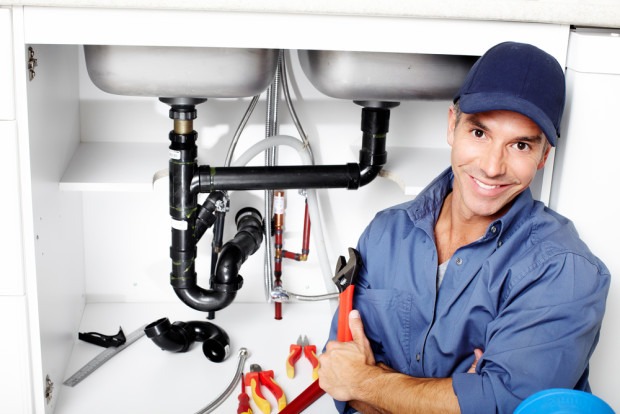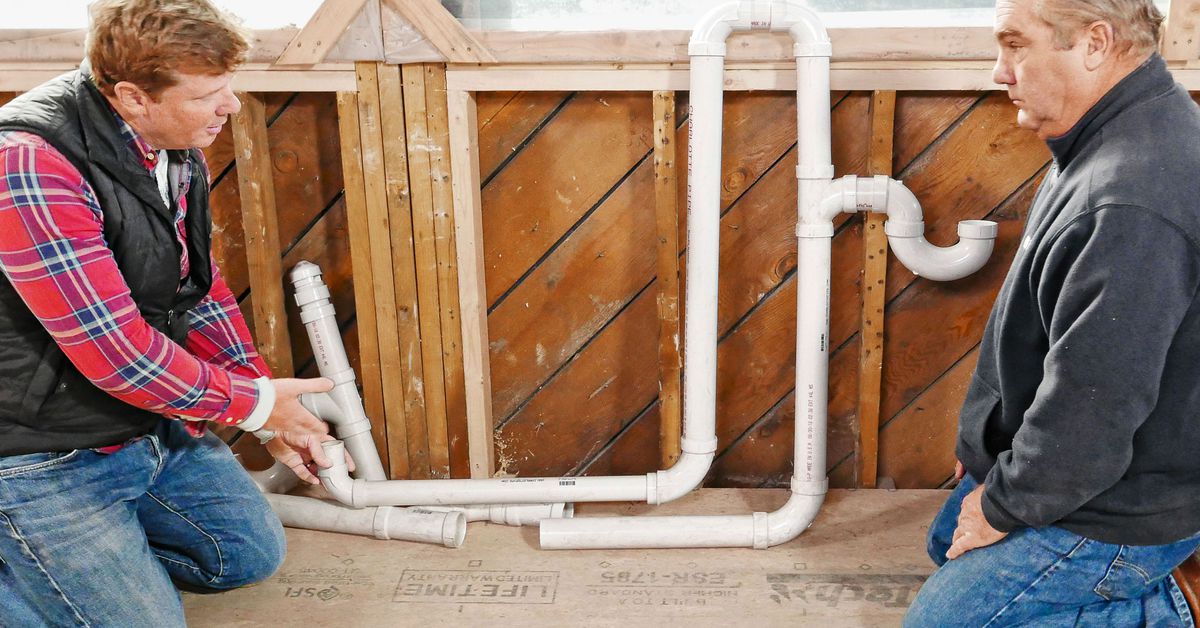Were you in search of tips around Why Do My Plumbing Pipes Make A Knocking Noise?

To identify loud plumbing, it is important to identify very first whether the undesirable sounds occur on the system's inlet side-in various other words, when water is transformed on-or on the drain side. Noises on the inlet side have actually differed causes: excessive water stress, used valve and also faucet parts, incorrectly linked pumps or various other devices, inaccurately positioned pipeline fasteners, and plumbing runs including a lot of limited bends or various other limitations. Noises on the drain side typically come from bad location or, as with some inlet side noise, a layout containing tight bends.
Hissing
Hissing sound that takes place when a tap is opened a little normally signals extreme water pressure. Consult your regional water company if you suspect this problem; it will certainly have the ability to tell you the water pressure in your area as well as can set up a pressurereducing valve on the incoming water supply pipeline if essential.
Various Other Inlet Side Noises
Creaking, squeaking, scratching, breaking, and also touching typically are caused by the expansion or tightening of pipelines, typically copper ones supplying warm water. The audios happen as the pipes slide against loosened bolts or strike neighboring home framing. You can frequently pinpoint the area of the issue if the pipes are revealed; simply comply with the sound when the pipelines are making noise. Most likely you will certainly find a loose pipeline wall mount or an area where pipelines exist so close to flooring joists or various other framing items that they clatter against them. Affixing foam pipe insulation around the pipes at the point of contact must fix the problem. Make certain straps and also wall mounts are protected and also supply adequate assistance. Where possible, pipeline bolts should be affixed to enormous structural components such as foundation walls rather than to framing; doing so reduces the transmission of resonances from plumbing to surfaces that can intensify as well as transfer them. If connecting fasteners to framework is unavoidable, cover pipes with insulation or various other resilient product where they contact bolts, and sandwich completions of new fasteners in between rubber washers when mounting them.
Fixing plumbing runs that deal with flow-restricting tight or countless bends is a last option that needs to be undertaken only after seeking advice from a skilled plumbing professional. Sadly, this circumstance is rather common in older houses that might not have actually been constructed with indoor plumbing or that have actually seen numerous remodels, especially by novices.
Babbling or Screeching
Intense chattering or shrieking that happens when a shutoff or tap is turned on, and that typically vanishes when the fitting is opened completely, signals loosened or malfunctioning internal parts. The remedy is to replace the valve or faucet with a brand-new one.
Pumps and also appliances such as washing makers as well as dishwashing machines can move electric motor noise to pipes if they are incorrectly connected. Link such items to plumbing with plastic or rubber hoses-never rigid pipe-to isolate them.
Drain Sound
On the drainpipe side of plumbing, the principal objectives are to get rid of surface areas that can be struck by dropping or hurrying water and also to shield pipelines to have inescapable audios.
In brand-new building and construction, bath tubs, shower stalls, toilets, as well as wallmounted sinks as well as containers must be set on or versus durable underlayments to decrease the transmission of noise with them. Water-saving bathrooms as well as faucets are less noisy than conventional models; mount them as opposed to older kinds even if codes in your area still permit making use of older components.
Drainpipes that do not run vertically to the cellar or that branch right into horizontal pipe runs supported at flooring joists or other framing present particularly frustrating sound troubles. Such pipelines are big enough to radiate substantial resonance; they also lug substantial quantities of water, which makes the situation worse. In brand-new building, specify cast-iron soil pipelines (the huge pipelines that drain commodes) if you can manage them. Their massiveness has a lot of the noise made by water travelling through them. Likewise, avoid transmitting drainpipes in wall surfaces shown bedrooms and also areas where individuals gather. Wall surfaces including drains ought to be soundproofed as was described previously, using dual panels of sound-insulating fiberboard and also wallboard. Pipes themselves can be covered with special fiberglass insulation created the function; such pipelines have an invulnerable vinyl skin (often containing lead). Outcomes are not always adequate.
Thudding
Thudding noise, commonly accompanied by shuddering pipelines, when a tap or home appliance valve is turned off is a condition called water hammer. The noise as well as vibration are brought on by the reverberating wave of stress in the water, which all of a sudden has no place to go. Often opening a shutoff that discharges water promptly into an area of piping including a constraint, elbow joint, or tee installation can produce the exact same condition.
Water hammer can normally be cured by setting up installations called air chambers or shock absorbers in the plumbing to which the issue shutoffs or faucets are attached. These devices enable the shock wave developed by the halted circulation of water to dissipate in the air they have, which (unlike water) is compressible.
Older plumbing systems may have brief vertical areas of capped pipeline behind walls on faucet competes the same objective; these can ultimately loaded with water, minimizing or destroying their performance. The cure is to drain pipes the water system entirely by shutting off the major supply of water shutoff and opening up all faucets. After that open up the primary supply shutoff and shut the faucets one by one, starting with the faucet nearest the shutoff and finishing with the one farthest away.
DIAGNOSE UNWANTED PLUMBING NOISES
Did You Hear That?
One of the first steps to take when diagnosing noisy plumbing is to determine whether the mysterious sound is occurring when your water is turned on or if it is a result of draining water. Noises on the inlet side (or when your water is turned on) could be caused by: excessive water pressure, worn valve or faucet parts, improperly connected pumps or other appliances, incorrectly placed pipe fasteners, and plumbing runs containing too many tight bends or other restrictions. Noises on the drain side usually stem from poor location or a possible pipe layout containing too many tight bends.
Hissing
A hissing noise that occurs when a faucet is opened slightly generally signals excessive water pressure. If you encounter hissing sounds call your locate water company, they will be able to tell you if the water pressure in your area may be the culprit. They can also install a pressure reducing valve on the incoming water supple pipe to help regulate the pressure.
Thudding
Thudding noise, often accompanied by shuddering pipes, when a faucet or appliance valve is turned off is a common condition referred to as a water hammer. The noise and vibration are caused by the reverberating wave of pressure in the water, which suddenly has no place to go. Opening a valve that discharges water at a rapid pace into a section of piping containing a restriction, elbow, or other fitting can also produce water hammer.
Water hammer can usually be cured by installing fittings called air chambers or shock absorbers in the plumbing to which the problem valves or faucets are connected. These devices allow the shock wave created by the halted flow of water to dissipate in the air they contain, which (unlike water) is compressible.
Older plumbing systems may have short vertical sections of capped pipe behind walls on faucet runs for the same purpose; these can eventually fill with water, reducing or destroying their effectiveness. The cure is to drain the water system completely by shutting off the main water supply valve and opening all faucets. Then open the main supply valve and close the faucets one at a time, starting with the faucet nearest the valve and ending with the one farthest away.
Chattering or Screeching
Intense chattering or screeching that occurs when a valve or faucet is turned on, and that usually disappears when the fitting is opened fully, signals loose or defective internal parts. In most cases, the only solution is to replace the defective valve or faucet with a new one.
Pumps and appliances such as washing machines and dishwashers can also transfer motor noise to pipes if they are improperly connected. When installing new appliances always link them to plumbing with plastic or rubber hoses and never use rigid pipe. This will dramatically cut down on the amount of noise create when the appliance is in use.
Other Mysterious Noises
Creaking, squeaking, scratching, snapping, and tapping noises are commonly caused by the expansion or contraction of copper pipes used to supply hot water. The sounds can occur as the pipes slide against loose fasteners or strike nearby house framing.
If you can pinpoint the problem by following the sound to an exposed pipe you may discover a lose pipe hanger or other obstruction that the pipes can clatter against. Attaching foam pipe insulation around the pipes at the contact points will lessen the transmission of vibration from plumbing to surfaces that can amplify the sounds.
When replacing or installing new pipe hangers try to fasten them to larger structural elements that will work to dampen or disperse the sound and always sandwich the ends of new fasteners between rubber washers.
Drain Pipe Noise
When dealing with noises produced by drain pipes the primary goal is to eliminate and surfaces that can be struck by falling water or rushing water and to insulate the pipes to contain any avoidable sounds.
When replacing toilets or faucets, inquire about water-saving alternatives as they are less noisy than conventional models. Upgrading your fixtures can be an easy solution to stubborn plumbing sounds.
When having old plumbing repaired or replaced avoid routing drain pipes in walls shared with bedrooms or rooms where your family and guests often gather. Walls containing drain pipes need to be soundproofed and the pipes themselves should be wrapped with specially designed fiberglass insulation.
https://www.horizonservices.com/about-us/blog/diagnose-unwanted-plumbing-noises/

As an enthusiastic reader about Why is My Home Making Strange Plumbing Noises, I assumed sharing that article was sensible. Enjoyed reading our write-up? Please share it. Help somebody else check it out. Thank you so much for your time invested reading it.
Click Here To Read More